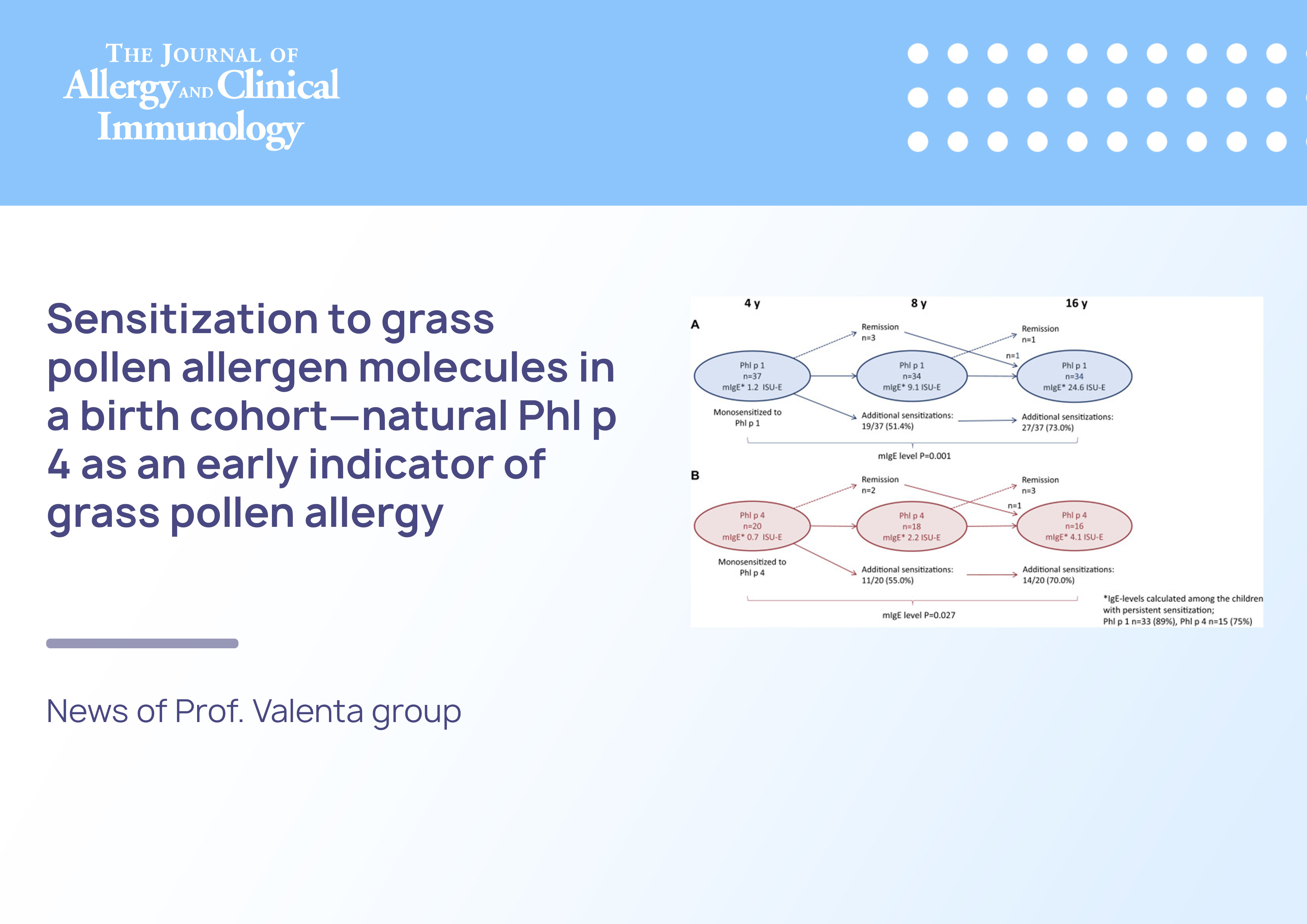Westman M, Åberg K, Apostolovic D, Lupinek C, Gattinger P, Mittermann I, Andersson N, Melén E, Bergström A, Antó JM, Bousquet J, Valenta R, Wickman M, van Hage M; Mechanisms for the Development of Allergies (MeDALL) consortium. J Allergy Clin Immunol. 2020 Apr;145(4):1174-1181.e6. doi: 10.1016/j.jaci.2020.01.006. Epub 2020 Jan 17. PMID: 31954777
Background
Grass pollen allergy is one of the most common allergies worldwide.
Objective
The aim of this study was to evaluate the usefulness of grass pollen allergen molecules for prediction of grass pollen allergy during childhood and up to adolescence.
Method
Questionnaire data and sera obtained from the study subjects at the ages of 4, 8, and 16 years from the population-based Barn/Children Allergy Milieu Stockholm Epidemiology birth cohort were used. Sera from 763 representative subjects with serum samples available at all 3 ages were analyzed for IgE reactivity to 8 Phleum pratense (Phl p) allergens (MeDALL [Mechanisms for the Development of Allergies] chip) and to timothy grass extract (ImmunoCAP). Allergic rhinitis to grass pollen (ARg) was defined as upper airway symptoms during grass pollen exposure.
Results
The prevalence of sensitization to any Phl p molecule was higher compared with that to timothy extract at all 3 ages: at the age of 4 years, 9.7% versus 6.8%; at the age of 8 years, 28.4% versus 15.3%; and at the age of 16 years, 37.1% versus 27.1%. General estimating equations analyses revealed that among children sensitized at the age of 4 years, the overall odds ratio (OR) of later ARg (up to 16 years) was increased only for IgE reactivity to Phl p 1 (OR = 4.9) and natural Phl p 4 (OR = 6.9). The likelihood of later symptoms increased with the number of allergen molecules; at the age of 4 years, 2 or more molecules predicted ARg to 78% and 3 or more molecules predicted ARg to 95%. A positive test result for timothy extract predicted ARg to 70%.
Conclusions
Natural Phl p 4 is a hitherto unrecognized early indicator of grass pollen allergy, in addition to Phl p 1. To identify grass pollen sensitization and predict later ARg, allergen molecules are of added value to timothy extract alone and may help clinicians improve prediction of grass pollen allergy.




